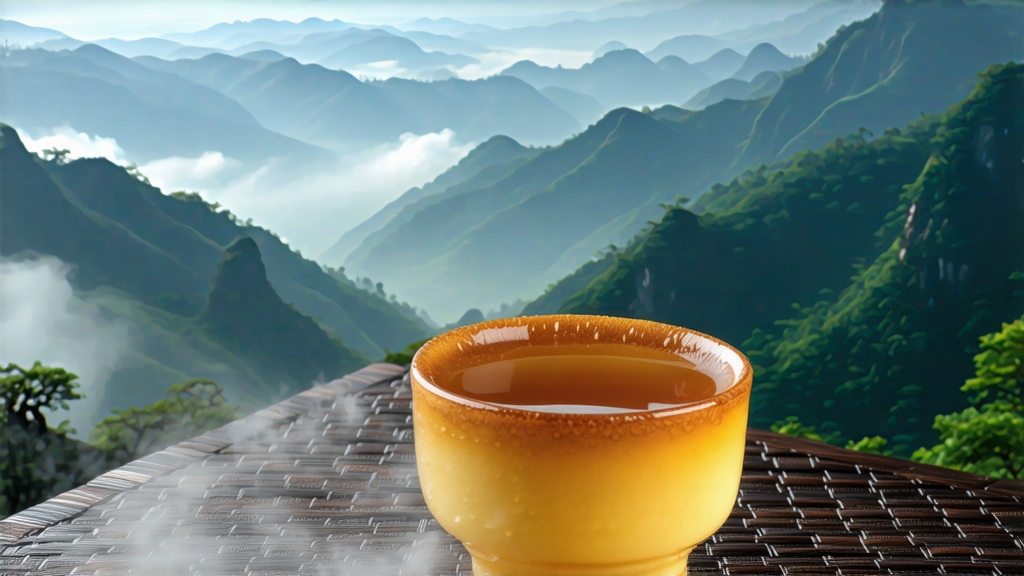
Tieguanyin, literally “Iron Goddess of Mercy,” is the most revered sub-style of Chinese oolong, a tea that sits poetically between green freshness and black depth. Born in the granite ridges of Anxi County, southern Fujian, its story begins in the 18th century with a devout farmer named Wei Yin. Legend says the deity Guanyin appeared in his dream, pointing to a hidden shrub behind a rusted iron gate; the next morning Wei transplanted the shrub, cultivated it, and named the tea after the iron gate and the goddess. Whether myth or marketing, the name stuck, and Tieguanyin became the cash crop that financed temples, overseas diasporas, and even the first Chinese tea franchised in New York.
Anxi’s microclimate—morning fog, afternoon sun, 1,000-meter elevation, and lateritic red soil—forces the tea bush to grow slowly, thickening cell walls and concentrating aromatics. Two main cultivars dominate: the traditional “Red Heart” (hong xin) with its shy, peach-like aroma, and the hardier “Green Heart” (qing xin) that yields louder orchid notes. Within these cultivars, modern craft has splintered Tieguanyin into five stylistic families:
- Qing Xiang (Light Fragrance) – minimally roasted, electric green leaves, snap-pea and lily bouquet.
- Nong Xiang (Rich Fragrance) – 30 % charcoal bake, chestnut-brown leaves, honeyed date and toasted sesame.
- Chen Xiang (Aged Fragrance) – re-roasted every two years for decades, mahogany leaves, camphor and plum.
- Zheng Wei (Original Taste) – no roast, only 24-hour “cooling” rest, creamy avocado body.
- Tuocha Xiang (Baked Biscuit) – compressed into 100 g nests, oven-dried, malt and brown-sugar finish.
Harvest unfolds like choreography. At dawn, when leaf turgor is highest, pickers pluck the standard “open-face” set: three leaves and a bud. The basket must reach the factory before 10 a.m.; any delay and the leaf oxidizes unevenly. Inside, the leaves are spread 3 cm thick on bamboo trays and wilted under 25 °C fans for two hours, softening cells for the signature bruising step. Four to six rounds of “yao qing” (rocking-green) follow: the leaves are tumbled in a 70 cm diameter bamboo drum that rotates at 18 rpm, edges cracking just enough to release enzymes. Between each tumble the leaves rest, breathing in humid air; the master monitors the red fringe creeping from the rim toward the midrib—when it reaches 25 %, oxidation is arrested.
The killing-green (sha qing) uses a 260 °C drum roaster for exactly 3.5 minutes; the goal is to freeze the 25 % oxidation while locking in floral lactones. Immediately after, the scorching leaves are wrapped in 12 kg linen bundles and run through a roller-press, twisting them into the iconic dragonfly-head shape. A 40-minute low-temperature bake (80 °C) dries the leaf to 7 % moisture, but the journey is not over. For Qing Xiang style, the tea rests for 48 hours, then is sorted and shipped. For Nong Xiang, the same leaf re-enters a charcoal pit fueled by longan wood where embers hover at 55 °C; here the tea is baked, cooled, re-baked in five cycles over 30 hours, absorbing sweet smoke that polymerizes sugars into molasses-like melanoidins.
Water is the silent ingredient. In Anxi, cuppers insist on local mountain spring water with 45 ppm TDS and a pH of 6.7; abroad, they recommend Volvic or a mix of distilled and tap to mimic that softness. For gongfu brewing, use a 120 ml gaiwan and 6 g of leaf—roughly two heaping tablespoons. Pre-heat everything; the first 95 °C flash rinse is not drunk but “wakes” the leaf, triggering aroma volatilization. Subsequent steeps are 15, 20, 25, 35, 50, 80 seconds, then 2, 3, 5 minutes, pushing the leaf to yield nine infusions. Light-style Tieguanyin